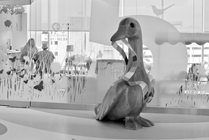Search Results
Viewing: 311-320 of 1460 | All
Article
Blood Counts: Chemo and Radiation Therapy
This Helping Hand™ explains how chemotherapy and radiation therapy can change blood cells and what that means for your child.
Scabies
Scabies is a skin condition caused by a mite.
Article
Orthodontics - Wearing Braces
This Helping Hand™ is a guide to caring for your teeth and braces.
Article
Safety
Nationwide Children’s measures and trends several key metrics for both patient and staff events. Every event is assigned a team to investigate and learn to prevent future events.
Article
Resources for Professionals
Access helpful documents and resources for your practice and your patients.
Article
Earwax
Ear wax protects and moisturizes the skin of the ear canal. This will help to prevent dry, itchy ears. Ear wax contains special chemicals that help to fight infection in the ear canal.

Condition
Cerebral Palsy (CP)
Cerebral palsy is a group of disorders that affects muscle tone, coordination, and movement. There are many types and severities of CP.
Article
Acetaminophen (Tylenol®)
This Helping Hand™ includes dosing information, side effects, and how to take the common pain reliever acetaminophen (Tylenol®).
Article
Frame and Pin Site - Care at Home
External fixators (frames) are used to hold an arm or leg bone in place so it can heal after surgery for limb-lengthening or reconstruction.
